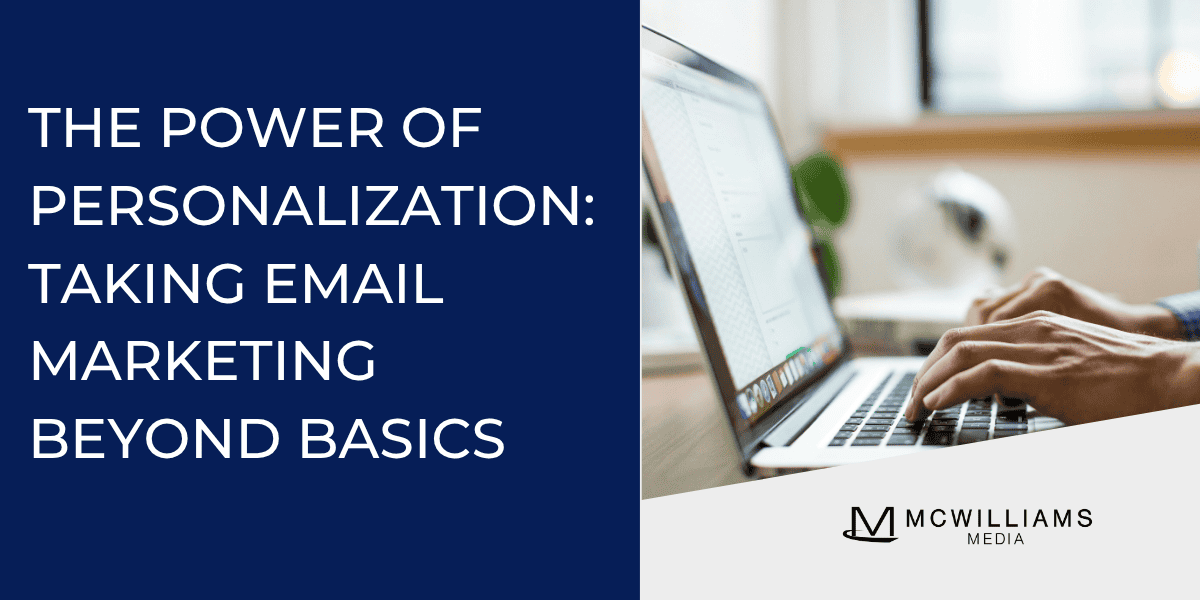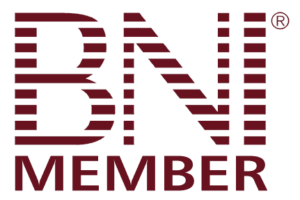
30 Jun The Power of Personalization: Taking Email Marketing Beyond Basics
Email marketing remains one of the most effective digital marketing strategies, consistently delivering one of the highest returns on investment. But in today’s crowded inboxes, sending generic messages won’t cut it.
Modern audiences expect content that speaks directly to them, addressing their needs, preferences, and behaviors. That’s where personalization comes in.
Moving beyond basic tactics like addressing subscribers by name, smart personalization strategies can transform how your audience engages with your brand, leading to stronger connections, increased conversions, and lasting loyalty.
In this month’s blog post, we’ll explore why personalization matters, what strategies you can implement, and how businesses are seeing tangible results by making their email marketing more relevant and tailored.
Why Personalization Matters in 2025
The digital consumer of 2025 is savvier and more selective than ever. With constant access to information and a growing number of brands vying for their attention, audiences quickly tune out irrelevant, one-size-fits-all messages.
According to recent studies, 72% of consumers engage only with marketing messages that are tailored to their interests. When emails feel personalized, open rates, click-through rates, and conversion rates see noticeable lifts.
It’s not just about grabbing attention — personalization fosters trust. When customers feel like a brand understands them, they’re more likely to remain loyal, make repeat purchases, and advocate for your business.
Going Beyond the Basics
Personalization today means much more than simply inserting a first name into the subject line. To truly connect with your audience, you need to deliver content, offers, and experiences that reflect their unique preferences and behaviors. Here’s how to move past the basics:
1. Segment Your Audience Intelligently
The first step toward meaningful personalization is segmentation. Instead of sending the same email to your entire list, divide subscribers into specific groups based on criteria like:
- Purchase history
- Email engagement (opens, clicks)
- Demographics (location, age, gender)
- Browsing behavior on your website
- Interests or product preferences
The more refined your segments, the more tailored your messaging can be, increasing relevance and driving better results.
2. Use Behavioral Triggers
Triggered emails based on user behavior are highly effective because they’re timely and relevant. Examples include:
Welcome Emails: Making a Strong First Impression
Triggered immediately after a user signs up or subscribes, welcome emails are your chance to set the tone for your relationship. These emails often include a warm greeting, an introduction to your brand, and an overview of what subscribers can expect from your emails.
Because they arrive at a moment of high interest, welcome emails typically see higher open and engagement rates, helping to build trust and encourage immediate action.
Abandoned Cart Emails: Recover Lost Sales
When a potential customer adds items to their shopping cart but leaves without completing the purchase, abandoned cart emails act as timely reminders to bring them back. These messages often include product details, special offers, or incentives like free shipping to encourage conversion.
Abandoned cart emails are highly effective because they target users when their purchase intent is still fresh, helping to recover potentially lost revenue.
Re-Engagement Emails: Reviving Inactive Subscribers
Subscribers who haven’t interacted with your emails or website for a while can be re-engaged through targeted campaigns designed to renew their interest. Re-engagement emails might include exclusive offers, personalized recommendations, or simply ask if the subscriber still wants to hear from you.
This approach helps clean up your email list by identifying active versus inactive users and can reignite relationships that might otherwise fade away.
Post-Purchase Follow-Ups: Building Loyalty and Driving Upsells
After a customer completes a purchase, follow-up emails provide an opportunity to thank them, request feedback or reviews, and introduce complementary products or services.
These emails not only enhance the overall customer experience but also encourage repeat purchases and upselling. Well-crafted post-purchase emails reinforce brand loyalty and keep your business top-of-mind.
Behavioral Triggers: Nurturing Leads with Precision
Using behavioral triggers in your email marketing shows customers that you’re attentive to their unique journey and needs. These automated responses nurture leads at every stage of the sales funnel by delivering relevant content exactly when users are most receptive.
This personalized approach increases engagement, builds trust, and ultimately drives higher conversion rates, making your marketing efforts more efficient and effective.
3. Dynamic Content Blocks
Many email marketing platforms now allow you to incorporate dynamic content blocks — sections of an email that change based on the recipient’s preferences or behavior.
For instance, a clothing retailer could send one email where customers interested in menswear see entirely different featured products than those who prefer women’s fashion, all within the same campaign.
This makes each email feel curated and personalized without creating multiple versions from scratch.
4. Personalized Subject Lines and Preheader Text
While personalization inside the email matters, it’s the subject line and preheader text that determine whether your email gets opened. Use subscriber data to personalize these key elements.
Incorporating names, recent interactions, or relevant product mentions into subject lines can boost open rates by up to 50%.
Example:
“Emma, Your Favorite Skincare Products Are Back in Stock!”
Real-World Examples of Successful Personalization
Many leading brands have embraced advanced personalization to achieve impressive results:
- Netflix customizes recommendations and content suggestions based on individual viewing history.
- Spotify’s Wrapped campaign delivers personalized year-in-review playlists to subscribers based on their listening habits.
- Amazon tailors product recommendations and promotional emails based on browsing and purchase history.
Common Email Marketing Personalization Mistakes to Avoid
While personalization is powerful, missteps can alienate customers. Avoid these common mistakes:
- Over-personalizing: Invasive or overly familiar messaging can feel uncomfortable. Respect boundaries.
- Using outdated or incorrect data: Inaccurate personalization is worse than none at all. Regularly clean and update your email lists.
- Ignoring mobile optimization: Personalized emails should look great on every device, especially mobile, where most people check their inbox.
- One-off personalization: Consistency matters. Make personalization part of your ongoing strategy, not a one-time effort.
Measuring the Impact of Email Marketing Personalization
To understand what’s working and what’s not, track key email metrics before and after implementing personalization strategies:
- Open rates
- Click-through rates
- Conversion rates
- Unsubscribe rates
- Revenue per email
Use A/B testing to experiment with different personalization techniques, such as dynamic content placement, subject lines, and segmentation criteria.
Tools and Platforms to Help You Personalize Your Emails
Today’s email marketing platforms – such as Mailchimp, ActiveCampaign, Constant Contact, and HubSpot – come equipped with powerful personalization and automation features that simplify the process of creating tailored email campaigns.
These tools make it possible for businesses of all sizes to deliver relevant, timely messages without overwhelming resources.
Key features to prioritize include dynamic content blocks that customize messages for different audience segments, advanced list segmentation to target the right users, behavior-based triggers that send emails based on user actions, A/B testing to optimize campaigns, and comprehensive analytics dashboards to track performance and improve results.
While these tools offer great functionality, partnering with an experienced email marketing professional can elevate your strategy even further. Experts can help you navigate platform capabilities, craft compelling personalized content, and design automated workflows that maximize engagement and ROI.
Investing in professional guidance ensures you harness the full potential of these tools and avoid common pitfalls, ultimately driving stronger business growth.
Ready to Take Your Email Marketing to the Next Level?
At McWilliams Media, we believe that personalized marketing isn’t the future — it’s the present. The brands that thrive in 2025 are those that deliver timely, relevant, and engaging content tailored to their audience’s preferences.
If you’re ready to move beyond basic email marketing tactics and start building deeper, data-driven connections with your audience, our team is here to help. We specialize in creating customized email marketing strategies that enhance engagement, increase conversion rates, and foster lasting customer relationships.
Contact our team today to discover how we can help transform your email marketing and grow your business with personalization done right.










